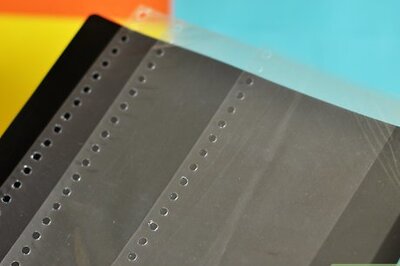
views
Skin cancer is a significant public health concern, and radiation protection plays a crucial role in mitigating its risks. In recent years, medical technology has made remarkable advancements in developing innovative radiation protection accessories to prevent skin cancer. These accessories aim to shield vulnerable areas of the body from harmful radiation exposure during medical procedures such as radiation therapy and diagnostic imaging.
Dr Tripti Saxena, Consultant, Radiation Oncology, Fortis Noida, says, “Radiation (low or high energy) can cause skin cancer, if a person is exposed to it in excess. This is because it can damage our DNA present in the cells. Radiation exposure to the public from medical imaging like X-ray, CT scan, mammogram etc. is rising, but the risk for development of skin cancer or any other cancer is either too small (<0.01%) to be detected, or non-existent. Hence, the concerns for cancer development are much lower than the risks of medical conditions if they are not diagnosed and treated correctly. Medical x-rays and other types of imaging are very important to help diagnose different illnesses – from broken bones to cancer.”
Latest developments for radiation safety, include specialized garments, protective shields, and novel materials designed to maximize shielding effectiveness while ensuring comfort and ease of use. The challenges faced in terms of design, efficacy, and accessibility are discussed, along with potential solutions.
Sumeet Bhat, President, Scientific Affairs & Manufacturing, Trivitron Healthcare, says, “The inherent developments in material science have fortified solutions to reduce the potential risks like cancer and other medical conditions associated with overexposure to ionizing radiation in medical settings.”
The need for protection against ionizing radiation in Diagnostic X-rays and Fluoroscopy along with Interventional Radiology has led to a wide variety of medical engineering solutions in traditional Lead and more recent Lead-free variants. This has become possible by formidable investments and research by firms, academicians and others over decades leading to enrichment in flexibility of use with no tradeoff with degree of protection.
“As development evolved, more specific applications like Thyroid, Gonad and Ovarian shields became available to provide optimal coverage to body parts that are sensitive to ionizing radiation exposure. Design advancements have rendered them more anatomically shaped and adjustable, thereby enhancing coverage and protection,” adds Bhat.
Bhat shares few of the persistently evolving solutions which have become complimentary of any medical procedures that are as follows:
Radiation Protection Eyewear has become lighter and more comfortable to wear for extended periods, allowing medical professionals to avoid compromising their vision or safety.
Radiation Protection Gloves have become necessary as the hands are particularly sensitive to radiation, and they can accumulate a significant dose during fluoroscopy procedures if left unprotected.
Implementation of new developments such as Nano Technology in Radiation Shielding material and design enhancement need to be integrated in the evolving engineering process.
Medical technology has emerged as a significant advantage in radiation protection accessories as advanced innovations not only ensure safety from radiation but also help prevent severe side effects such as skin cancer. “These technological advancements have facilitated innovative tools such as lead aprons, thyroid collars, and protective eyewear, which serve as essential shields, safeguarding healthcare professionals and patients from harmful radiation during medical procedures,” says Dr Aakaar Kapoor, CEO and Lead Medical Advisor, City X-Ray & Scan Clinic | Partner, City Imaging and Clinical Labs.
The World Health Organization (WHO) places paramount importance on ensuring safety from radiation exposure and is dedicated to promoting its safe and effective use. This commitment is demonstrated through the Global Initiative on Radiation Safety, where radiation protection is seamlessly integrated into the principles of good medical practice and the quality of healthcare services. By incorporating radiation protection measures into these fundamental concepts, the WHO strives to establish a comprehensive approach that safeguards individuals from the potential risks associated with radiation. Through ongoing efforts and initiatives, the WHO aims to enhance awareness, knowledge, and practices regarding radiation safety, ultimately protecting the well-being and health of individuals worldwide.
Challenges
There are also multiple challenges associated with radiation safety accessories. “The weight and discomfort of traditional radiation protection gear often pose ergonomic issues, potentially compromising the efficiency and compliance of healthcare providers. Additionally, cost considerations and the need for continuous training and maintenance further complicate the widespread adoption of such accessories,” adds Dr Kapoor.
Solutions
To address these challenges, focus on integrating lightweight materials, ergonomic designs, and advanced sensors. “Developments in nanotechnology and flexible shielding solutions offer promise for creating lightweight yet highly effective radiation protection gear. Furthermore, the incorporation of intelligent sensors and real-time monitoring systems can enhance safety by providing accurate dosage measurements and alerts. Despite challenges, ongoing innovations and future directions hold tremendous potential for improved radiation safety and mitigating the risks of skin cancer. By leveraging advanced materials, ergonomic designs, and intelligent monitoring systems, medical technology can revolutionize radiation protection accessories, ensuring the well-being of healthcare professionals and patients alike,” opines Dr Kapoor.
Furthermore, experts highlight the importance of continuous research and development to enhance existing technologies and explore new approaches to radiation protection. It also sheds light on the potential impact of emerging technologies such as wearable sensors and smart materials in revolutionizing radiation protection practices. By examining the current landscape, addressing challenges, and exploring future directions, we aim to contribute to the ongoing efforts in improving radiation safety, reducing the risk of skin cancer, and promoting the well-being of patients and healthcare professionals alike.




















Comments
0 comment